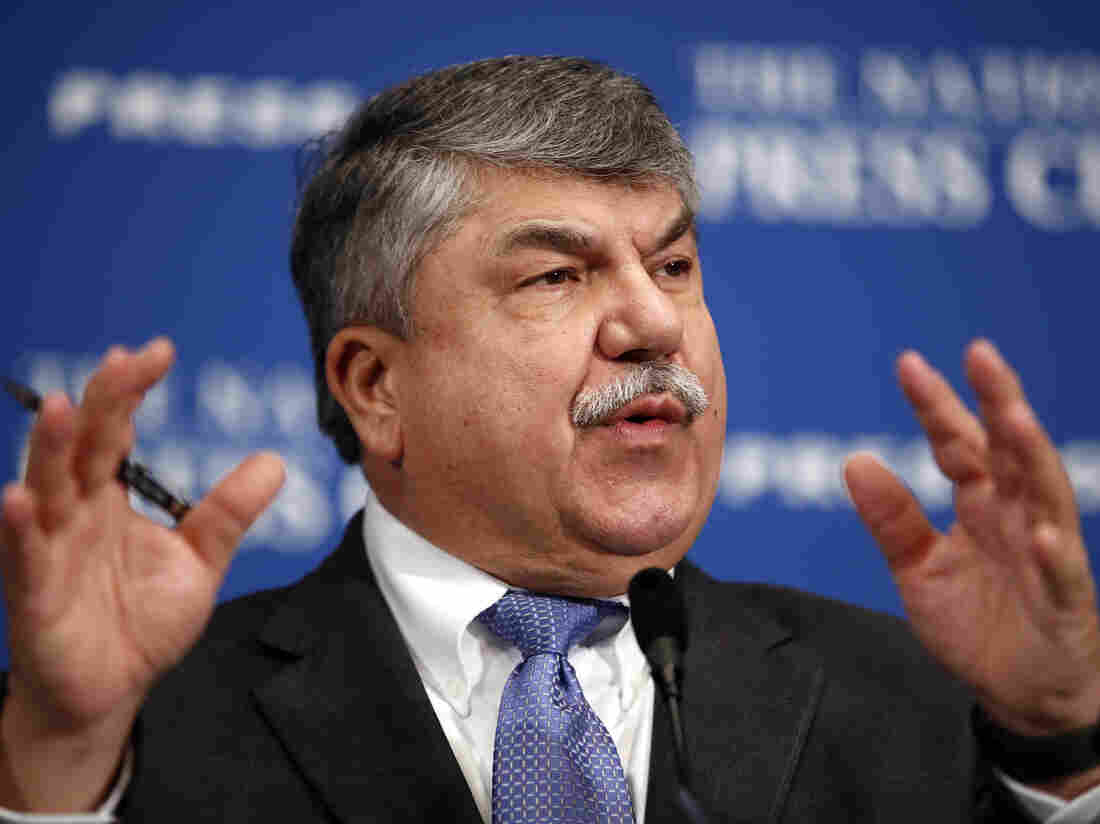Have An Airline Complaint? Don't Call The Airline — Tell The Dept. Of Transportation
Passengers at Chicago’s O’Hare International Airport wait in line for security screening in May 2016. A study released Monday found that U.S. airline quality is higher than ever, but air travelers may disagree.
Scott Olson/Getty Images
hide caption
toggle caption
Scott Olson/Getty Images
An annual study of airline quality in the U.S. gave airlines the highest scores in the 26 years the rankings have been published.
You may be wondering: How is that possible?
Especially since a story dominating news headlines has to deal with a passengers being forcibly removed from a United flight over the weekend because the airline had overbooked.
Topping the Airline Quality Rating for 2016 were Alaska Airlines, Delta and Virgin America. At the bottom were Frontier, Spirit and ExpressJet. The rankings are based on performance numbers the airlines must report to the U.S. Department of Transportation, as well as complaints made by the public to the DOT about the airlines.
The survey compiles data on four factors: on-time arrivals, involuntary denied boardings, mishandled baggage and customer complaints in 12 categories.
The data show that in 2016, airlines improved on-time arrivals and baggage handling, while reducing denied boardings and consumer complaints.
But the rankings reveal a few details worth examining.
In 2016, 81.4 percent of flights arrived on time, compared with 79.9 percent in 2015. Great news, right? Well, maybe not.
“While [the airlines] aren’t delaying too many flights, they’re canceling a lot of them,” says Brent Bowen, one of the report’s authors and professor and dean of the College of Aviation at Embry-Riddle Aeronautical University.
And it turns out that while airlines have to report their percentage of delayed flights to the Bureau of Transportation Statistics, they aren’t required to similarly disclose canceled flights.
Instead, those canceled flights are only captured (if at all) in customer complaints to the DOT.
Still, the survey’s authors give the greatest weight in the rankings to on-time arrivals, because consumers have said that’s what’s most important. “If you do that, you’re good,” says Bowen. “If you don’t, you’re bad.”
But perhaps you find flight delays less annoying than the array of aggravations that fall under the “complaints” rubric — such as fares, canceled and oversold flights, and problems with ticketing. Then you might want to avoid two airlines in particular: Spirit and Frontier. While both airlines had complaints go down since 2015, complaints about those two airlines are significantly higher than the industry average.
Which brings us to the biggest lesson from this survey: If you’re mad at an airline, don’t complain only to the airline. Complain to the Department of Transportation, too.
Only complaints lodged with the DOT are included in surveys like the Airline Quality Rating. So if you call Spirit or Frontier to complain about a litany of fees or a canceled flight, only the airline hears about it. Complaining to the DOT, meanwhile, can potentially lead to bigger changes:
“All complaints are entered in DOT’s computerized aviation industry monitoring system, and are charged to the company in question in the monthly Air Travel Consumer Report. This report is distributed to the industry and made available to the news media and the general public so that consumers and air travel companies can compare the complaint records of individual airlines and tour operators.
These complaints are reviewed to determine the extent to which carriers are in compliance with federal aviation consumer protection regulations. This system also serves as a basis for rulemaking, legislation and research. Where appropriate, letters and web form submissions will be forwarded to an official at the airline for further consideration.”
So what about all those angry calls, emails and tweets that travelers make to airlines each day?
Complaining to the airline “gets the traveling public nothing,” says Bowen. “There is no AAA, no AARP of airline passengers. Travelers don’t have an advocacy with the airlines.”
And without that prominent advocate, conditions for air travelers may not improve.
As NPR’s David Schaper reported in October, the Obama administration proposed new rules aimed at helping air travelers. One rule would require airlines to refund a traveler’s checked baggage fee if luggage is “substantially delayed.” A second would require travel-booking websites, which often rank airlines higher or lower based on undisclosed payments or other business incentives, to disclose any financial links to airlines. A third would require regional carriers such as Allegiant or Air Wisconsin to also report their on-time performance data.
But last month the DOT, now under the Trump administration, suspended the public comment period for those proposed rules, saying, “The suspension of the comment period will allow the President’s appointees the opportunity to review and consider this action.”
2017 Airline Quality Rankings
- Alaska Airlines
- Delta Air Lines
- Virgin America
- JetBlue
- Hawaiian Airlines
- Southwest Airlines
- SkyWest Airlines
- United Airlines
- American Airlines
- ExpressJet
- Spirit Airlines
- Frontier Airlines
2016 Total Complaints to the Department of Transportation for U.S. Airlines, per 100,000 passengers
Alaska: 0.50
American: 2.49
Delta: 0.68
ExpressJet: 0.51
Frontier: 5.94
Hawaiian: 1.16
JetBlue: 0.75
SkyWest: 0.49
Southwest: 0.47
Spirit: 6.74
United: 2.27
Virgin America: 1.85
















